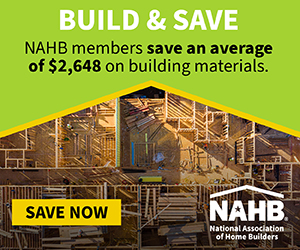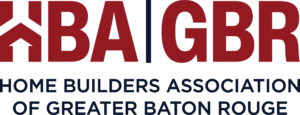
The following article was provided by Kenney & Sams, P.C., a law firm based in Boston with a construction and real estate representation practice.
Our clients are asking us: Do commercial property and, specifically, business interruption insurance policies provide coverage for COVID-19-related losses?
As discussed below, it is critical that you promptly review your company’s policies, exclusions and relevant endorsements to evaluate whether your business has coverage in the wake of COVID-19. If appropriate, you should make a claim with your insurance carrier.
Business Interruption Insurance Overview
Business interruption insurance. Commercial property policies often include business interruption or business income coverage that is designed to protect prospective earnings of a business. That is, the coverage indemnifies a policyholder for losses arising from the business’s inability to operate normally, provide its services and fully function.
Coverage is generally triggered by total or partial suspension of business operations due to the impairment, damage, destruction, or loss of the use of a building, machinery, equipment, or other business property. Picture the sprinklers going off and drenching files, flooding computers, and forcing a business to shut down or reduce profits while they make repairs.
This coverage generally lasts for the “period of restoration,“ meaning the time it takes to repair or rebuild the damaged property. In other words, your policy would optimally pay repair costs and reimburse you for lost operating revenue while your business remains closed.
Notably, to establish a business interruption claim, you must prove (a) a direct physical loss or damage to property at the insured’s premises; (b) that necessitates suspension of operations; and which (c) directly causes the business income loss.
Key Exclusions/Endorsements to Consider
Many policies include an endorsement that specifically excludes damages caused by viruses or bacteria called formally the “Exclusion of Loss Due to Virus or Bacteria Endorsement.” The key to understanding coverage, therefore, is first to determine whether your policy includes this endorsement. If it does, you may not be covered. For policies that include the standard Exclusion of Loss Due to Virus or Bacteria Endorsement, coverage will likely be precluded.
Where a policy includes the Exclusion of Loss Due to Virus or Bacteria Endorsement, courts must first consider whether the claim satisfies the insuring agreement, i.e., whether coronavirus contamination constitutes a “direct physical loss or damage to covered property.”
Is a Coronavirus Infection a “Direct Physical Loss or Damage to Covered Property” to Trigger Coverage?
As set forth above, to trigger business interruption coverage, there must be a direct physical loss or damage to the premises. How courts interpret this language in the context of COVID-19, however, will impact businesses throughout the world and have staggering societal, economic and legal implications. What if, for example, an employee, visitor or tenant tests positive for the coronavirus, forcing owners to close? What if testing reveals coronavirus on the surface of a countertop in a company’s kitchen or on a piece of equipment at a jobsite? Would that be evidence of “direct physical loss or damage?”
The answer to that question may come down to whether an insured party can convince their carriers and the courts that the existence of the deadly virus at the premises constitutes physical loss or damage to property.
Already, insureds are racing to the courthouse for a judicial determination of coverage. A restaurant in New Orleans recently filed suit asking the court to determine whether state and local restrictions on public gatherings and restaurant operations trigger coverage. The complaint states that “the deadly virus physically infects and stays on the surface of objects or materials, ‘fomites,’ for up to 28 days, particularly in humid areas below 84 degrees.” “Fomites” are inanimate objects that can become contaminated with infections agents and, in turn, cause the virus to transfer from object to human. Expect courts to hear that word often in the coming months and years.
Additionally, the complaint alleges that it is “clear that contamination of the insured premises by the coronavirus would be a direct physical loss needing remediation to clean the surfaces of the establishment.”
Does the presence of a virus on the physical property, causing shut down, trigger coverage? Must an infected person first contaminate the physical property, with a test determining the virus was on the actual building or its interior — or is a positive test by a single occupant of the building enough? What if COVID-19 is found on a piece of equipment at a jobsite, but no one is infected, and the company voluntarily shuts down? Will businesses be able to successfully argue that coronavirus at a premises, causing fomites to exist and businesses to close, constitutes a physical loss to the property?
Is coverage available when a construction project is shut down by the government, or work is voluntarily stopped before COVID-19 is detected at the job site?
At a minimum, companies seeking to claim a business interruption will likely have to show their policy did not include a “Virus Exclusion.” Next, policyholders would need to convince a court that the presence of the coronavirus is a physical loss to the premises, just like noxious fumes or other contamination at a premises, and that this physical loss and damage to the property caused the business operations to suspend, resulting in loss of business income to the policyholder.
Third-Party Claims and Commercial General Liability (CGL) Coverage
Companies may also be faced with third-party liability claims arising out of the COVID-19 pandemic. A CGL policy covers damages for “bodily injury” and “property damage” resulting from an “occurrence.” CGL policies often contain a Fungi or Bacteria exclusion, sometimes referred to as the “Mold exclusion,” which may limit coverage. If there is such an exclusion, the policy language will need to be examined to determine whether it is defined to include a virus or communicable disease.
There are countless questions that will need to be answered by insurance carriers, lawyers and, ultimately, courts over the coming months. With the stakes so high, litigants will push these arguments, relying on creative application of state and federal caselaw, the language of the policies and endorsements, and the facts of each specific instance of business interruption and loss.
NOTE: Massachusetts and possibly other states are considering rules allowing for retroactive coverage to include COVID-19 claims. Learn more.
Nathan Cole is a director at Kenney & Sams, P.C., and has been representing small businesses, construction contractors, subcontractors and home owners in Massachusetts for more than a decade.














